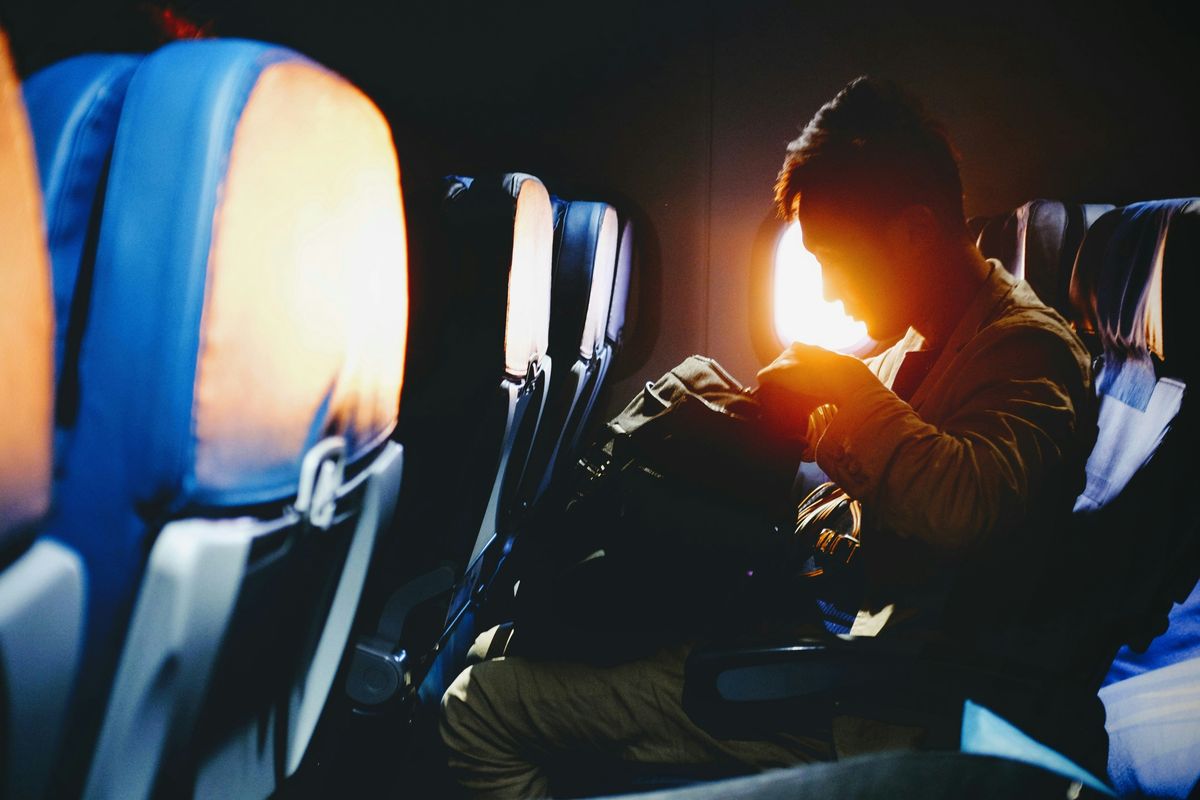Student flies 400 miles to college twice a week because it's cheaper than renting
We're living in strange economic times.

Can flying to college twice a week really be cheaper than renting?
Some students choose to live at home while they go to college to save money on living expenses, but that's generally only an option for families who live in college towns or cities with large universities where a student can easily commute.
For University of British Columbia student Tim Chen, that "easy commute" is more than 400 miles each way.
Twice a week, Chen hops on a flight from his home city of Calgary, flies a little more than an hour to Vancouver to attend his classes, then flies back home the same night. And though it's hard to believe, this routine actually saves him approximately $1,000 a month.
How does that math work? Well, each round trip flight costs around $150, so twice a week puts him at $1,200 a month for flights. Meanwhile, according to CTV, rent for a 1-bedroom apartment in Vancouver is around $2,100 (though according to reporting in the Vancouver Sun, the average 1-bedroom apartment has actually hit a whopping $3,000 a month). Chen had actually been living in Vancouver previously, but gave up his rental when he went on vacation. When he returned, the price on the place he'd been renting had gone up to $2,500.
"I thought, why don't I just stay at Calgary and then just fly here, it’s like a one-hour flight, that’s like the same as taking a bus,” he told CTV.
Chen lives with his parents in Calgary and only pays a small amount for utilities, so despite the cost of flights, commuting by plane is ultimately far cheaper than living in Vancouver.
Plus, imagine how many frequent flier miles he's racking up.
Chen is not the first student to commute to college by commercial airplane. An engineering student who was accepted to a one-year master's program at University of California, Berkeley, flew to school from Los Angeles, where he had an affordable place to live and where he planned to return when his program was finished. Once he crunched the numbers, he realized it would actually save him money to commute by plane to the Bay area and take the train from the airport to campus three times a week rather than live in Berkeley.
In all, that student spent $5592.66 over the 10 months it took him to complete his program, which was less than what he would have paid for just two months living in Berkeley.
We're living in some strange economic times, where people are having to get creative about where and how they live. Some people have discovered that unconventional lifestyles, such as living on a cruise ship, in vacation rentals or at an all-inclusive resort can be less expensive—or just as expensive—as traditional rent or mortgage payments (plus relevant living expenses). And now that more people are able to work remotely—one of the few positives to come out of the pandemic—such alternatives are more doable than ever.
Of course, the "time is money"consideration is real, and the hassle of going to the airport twice a week in the morning and evening like Tim Chen does might not be worth it for some people. But with rent prices nearly 30% higher than they were before the pandemic, more people are in need of creative solutions to cost-of-living conundrums.
Even if that means living at home and hopping a flight to school several hundred miles awaay.
- 28-year-old buys cruise ship apartment because it's less than renting and he can see the world ›
- A couple in their 50s live permanently on a cruise ship because it's cheaper than a mortgage ›
- Couple retires to live on cruise ships because it's 'cheaper than a nursing home' ›
- 'Supercommuter' mom flies in a plane to work every day because it's cheaper than living there - Upworthy ›



 Worried mother and children during the Great Depression era. Photo by Dorthea Lange via Library of Congress
Worried mother and children during the Great Depression era. Photo by Dorthea Lange via Library of Congress  A mother reflects with her children during the Great Depression. Photo by Dorthea Lange via Library of Congress
A mother reflects with her children during the Great Depression. Photo by Dorthea Lange via Library of Congress  Families on the move suffered enormous hardships during The Great Depression.Photo by Dorthea Lange via Library of Congress
Families on the move suffered enormous hardships during The Great Depression.Photo by Dorthea Lange via Library of Congress

 Millennial mom struggles to organize her son's room.Image via Canva/fotostorm
Millennial mom struggles to organize her son's room.Image via Canva/fotostorm Boomer grandparents have a video call with grandkids.Image via Canva/Tima Miroshnichenko
Boomer grandparents have a video call with grandkids.Image via Canva/Tima Miroshnichenko
 Classic Film GIF
Classic Film GIF  Oh nothing, just Edyth, Arthur, and Iris hanging out at the park.
Oh nothing, just Edyth, Arthur, and Iris hanging out at the park.
 It helps that Golden Retrievers are notoriously friendly. Photo by
It helps that Golden Retrievers are notoriously friendly. Photo by